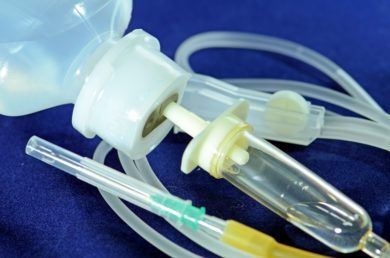Medical waste management is a concern for all medical device manufacturers. There are many medical waste disposal facilities across the globe, but because medical wastes can be grouped into just a few discrete categories, there are only a small number of disposal facilities available near specific manufacturing locations.
Many medical devices may be used for varying applications, but the waste produced during medical device manufacturing is fairly consistent from site to site. Typical waste from medical device manufacturing processes include:
– halogenated and non-halogenated solvents
– Wastewater
– unused medical devices which can include both RCRA (Resource Conservation and Recovery Act) and non-RCRA materials
Solvents
Many different solvents can be used for cleaning and production of medical devices during manufacturing. The solvents are categorized into two primary groups: halogenated and non-halogenated solvents.
Non-halogenated solvent wastes like methanol, ethanol, and acetone are primarily composed of one type of solvent that can often be recycled or blended into fuels.
Halogenated solvent waste containing halogens—fluorine, chlorine, or bromine often must be disposed of using a chemical incinerator. This process is often significantly more expensive than the disposal of than non-halogenated solvent waste. It’s worth noting that if non-halogenated solvents are mixed with halogenated solvents, the entire mix must be treated as halogenated waste and disposed of accordingly. Thus, it is important to keep different kinds of wastes separated throughout the production process when possible.
Wastewater
Wastewater from medical device manufacturing processes is usually runoff water from medical device cleaning processes and may contain both inorganic (metallic) components and organic (solvent) components. It is very important for medical device manufacturers to properly treat all of their wastewater streams. Improper treatment of wastewater streams, such as allowing wastewater containing higher-than-regulation amounts of inorganic or organic compounds to leave the processing environment can result in severe fines and penalties.
Unused devices
Because medical devices are strictly regulated and must achieve rigid accuracy and precision standards due to the nature of their use, medical device manufacturing processes are susceptible to producing unused medical device waste from medical devices that do not qualify for use based on predefined standards. Typically, unused medical device waste is incinerated or sent to landfills. Additionally, waste medical devices that are high metal content are typically sent to landfills if they cannot be recycled.
In contrast, incineration, which is the destruction of waste materials via burning, is often used to dispose of unused device waste when the device waste does not have a high metal content. Incineration can be subcategorized into RCRA and non-RCRA incineration, depending on the material incinerated.
RCRA waste materials, also called solid wastes, are classified as hazardous waste materials and thus must be disposed of in a more regulated manner. As such, RCRA waste incineration is often more expensive than non-RCRA waste incineration. Interestingly, RCRA classification is not based on the material composition as much as the product use or disuse. Solid waste includes abandoned materials, inherently waste-like materials, discarded military munitions, and materials recycled using certain processes.
Sustainable Manufacturing
In addition to disposal methods, many medical device manufacturers are implementing sustainable manufacturing practices to reduce the amount of waste they have to dispose of. Through waste reduction and closed-loop recycling techniques, medical device manufacturers can potentially reduce waste disposal costs as well as raw material costs.
However, because the medical device industry is severely regulated, lean manufacturing practices may be difficult to implement, as all changes to the manufacturing process must be thoroughly tested, documented, and approved prior to implementation.
To learn more about how GK equipment can help play a supporting role in your medical waste disposal practices, contact General Kinematics today!








